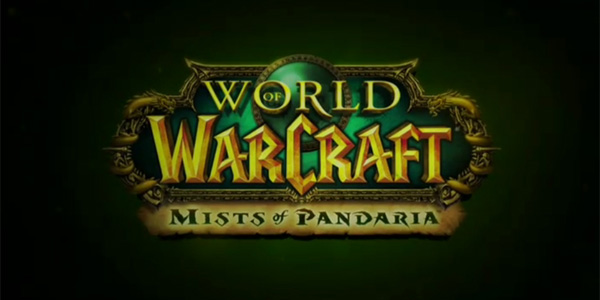There are cliched ways to describe cliche games. A crass way to describe Valiant Hearts: The Great War, the latest title from AAA publisher, Ubisoft, would be to call it a side-scrolling puzzle-adventure based around World War One. At times Valiant Hearts earns such a primitive description, its story can be simple-minded, its mechanics can feel game-y, and its tone can be splintered. That being said, there are other times when Valiant Hearts is so much more than another puzzle game, times when its ambition is admirable and its reverence for war unlike any game before it. Valiant Hearts can hit and miss, but it doesn’t play it safe.
More than anything, Valiant Hearts is a scattered game. Jumping between emotional storytelling with creative gameplay, to hamfisted writing with unimaginative mechanics. War is almost a cliche itself in video games. While numerous games revolve around invented conflicts or World War II, the first World War is actually relatively untouched as far as video games go. Valiant Hearts jumps right to the start of the war, explaining the assassination of the Austrian Archduke Franz Ferdinand, and how it pulled a handful of powerful nations into a massive conflict. It then introduces the protagonists of the story, a husband ripped from his home named Karl, his father-in-law who is forced to fight against him named Emile, the far-from-home American named Freddy, the nurse who will save them all named Anna, and the dog who will be their companion named Walt.
The games shifts the story’s perspective between the four human protagonists, but usually a couple of them always seem to wind up together. Initially they team up to go after an evil Baron at the head of the German forces, but the narrative seems more-or-less disinterested with the this story as it meanders along. There are moments in Valiant Hearts where the storytelling truly resonates. When Emile helps a German soldier only to later kill him, or when Karl is held at a POW camp, the narrative rings with the right amount of truth, pulling you into the atmosphere of World War One. But Valiant Hearts tries to shove too much into itself for the sake of convenience. Characters miraculously seem to find each other, there is a maniacal villain, a french farmer’s letters are read with a british accent, you will really have to suspend your disbelief for some of the curveballs Valiant Hearts throws at you. The game also employs narration when it needs to fast-forward the action, which sticks out like a sore thumb. Valiant Hearts all too often gets impatient with itself, and fails to really hunker down into the truth of World War One.
While the main narrative isn’t spectacular, the bits which accompany it are quite wonderful. As you take part in major battles or experience a certain aspect of the war, little historical notes fill in the details. At first, it doesn’t make sense to have a character drive their taxi from Paris to the front, then the game throws a historical fact at you, explaining the act you’re playing through actually did happen. Also, each character gets diary entries which help fill in some of the blanks in the game’s narrative. These additional pieces of content really help flesh out Valiant Hearts in a way the main story never does.
The adventure game aspect to Valiant Hearts is a mixed bag. The majority of the game is spent searching environments, finding items character want, and using those items to progress through the level. As adventure games go, Valiant Hearts is fairly simple. There is a hint system which is generous and the puzzles are easy to begin with. It’s clear Valiant Hearts doesn’t want to bog down players who might be missing the obvious, and just wants to keep its narrative spinning along. While the puzzles aren’t ever hard, they can be creative and relevant to the setting. Usually the historical tidbits will fill in the blanks, explaining the context of your assigned tasks.
The gameplay remains varied throughout. Each character has different roles in the war and they are represented through changes in the gameplay. Freddy’s sections are usually combat heavy, and involve a lot of charing through the battlefield and attacking the enemy. Anna is a medic, so time with her is usually spent healing soldiers and finding the supplies to aid them. Emile works in the trenches and can be used to tunnel through the ground. Karl spends most of the game as a POW and faces the challenges of surviving as a prisoner.
The adventure-style gameplay is broken up by runner sections. Usually this is something which occurs on the battlefield, as you blindly charge forward while having to dodge machine-gun fire and dropping bombs. There are also times where you drive a tank (probably the most uninventive the game gets) or avoid detection from soldiers who are looking for you. These moments which break up the adventure gameplay are a nice touch and keep the game from becoming stagnant. The best of these moments are scenes where Anna is escaping the war in her taxi while being bombarded. The taxi bobs and weaves across the screen while shells drop and machine guns shoot, all to the rhythm of such classic works as, “Flight of the Valkyries”. There’s nothing earth-shattering about these sections, or the whole of Valiant Heart’s gameplay, but it faithfully conveys the type of game Ubisoft Montpellier is trying to deliver. It is thoughtful, pensive, but occasionally action-filled and dangerous.
It wouldn’t be an Ubisoft game if there weren’t collectibles and parts of Valiant Hearts fill this quota. Each setting offers a series of collectible items which can be gathered. Furthermore, Interacting with certain set-pieces gives you achievements which will keep trophy hunters scouring levels. To some degree, the historical tidbits, and diary entries feel like collectibles themselves. The item collectibles are the one part of Valiant Hearts which feels game-y and superfluous, but ultimately, they don’t interfere with your experience.
The UbiArt Framework engine has been one of the best things to come out of Ubisoft. Originally seen in Rayman Origins and Legends, the engine recently was used to make the gorgeous Child of Light, and now Valiant Hearts. Valiant Hearts almost looks like a story book at times, with gorgeous backgrounds and careful use of color. So much of the game is washed out in the grey of war, that when we are transported to Karl’s rural farmhouse, it looks heavenly. The game’s use of art is undeniably smart and creative. Explosions are nasty and abrupt, important items are carefully moved to the forefront of the scene so they are easily identified, and the animated clouds of gas look positively evil. It is another example of how simple animation can be more gorgeous and poetic than the photorealism so many game cling to.
Valiant Hearts: The Great War is an okay game, made great by all of the little things it does. A moving and emotional score sets the tone for your journey. Smart artistic choices convey the dark themes of war while keeping the atmosphere vibrant and animated. Little historical facts justify the gameplay and allow for variation in pace. Action sequences are enthralling and exhilarating. Valiant Hearts is far from a perfect game, and something tells me it is a game which will ring a bit differently with everyone, but it has so many intriguing ideas and pursues them with such uninhibited ambition, you owe it to yourself to give this game a shot and sort out how you feel about it. Whether you like it or not, Valiant Hearts is a game that is worth talking about and admiring for its spirited bravery.






Leave a Reply